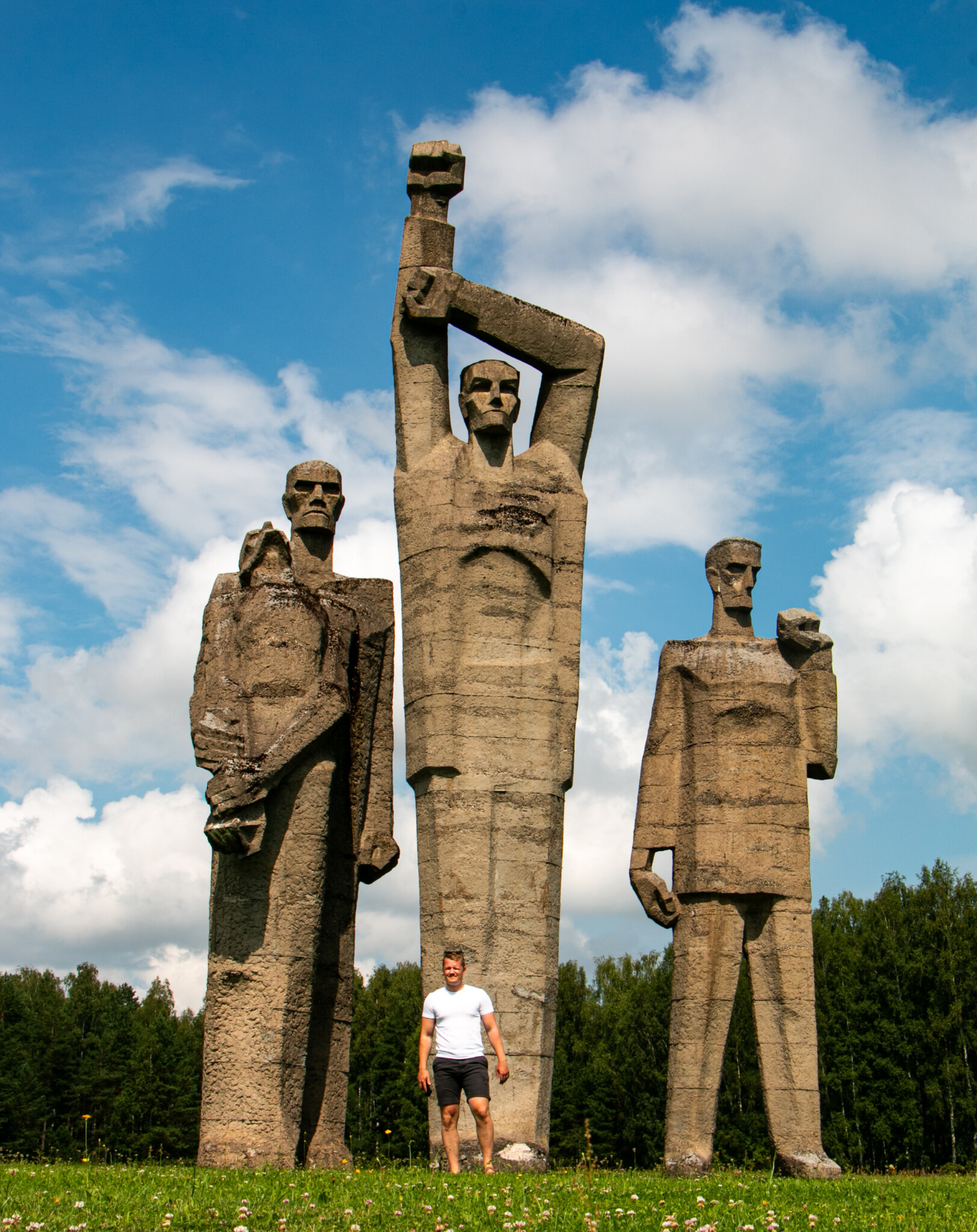
Riga, the capital of Latvia, is an interesting city that has been through a lot throughout history. First an important trading port under the Livonian Order, then the largest city within the Swedish Empire, and later under German and Soviet occupations. Today, the country of Latvia is free, and so is its capital city Riga. The city beautifully blends medieval history with modern culture. Located on the Baltic Sea, Riga offers an interesting blend of beautiful Art Nouveau architecture, Soviet history, and modern cafés and restaurants with tons of things to see and do around the capital of Latvia. Considering that Riga receives less than a tenth of the annual tourists that its Baltic neighbor Stockholm receives (roughly 1.2 million vs. 15 million), Riga is one of those hidden gems in Europe that few international tourists visit.
Having recently visited Latvia and Riga (actually my second time in the country), I put this blog post together to share with you the best things to do in Riga to ensure that you make the most of your visit to this Baltic capital.
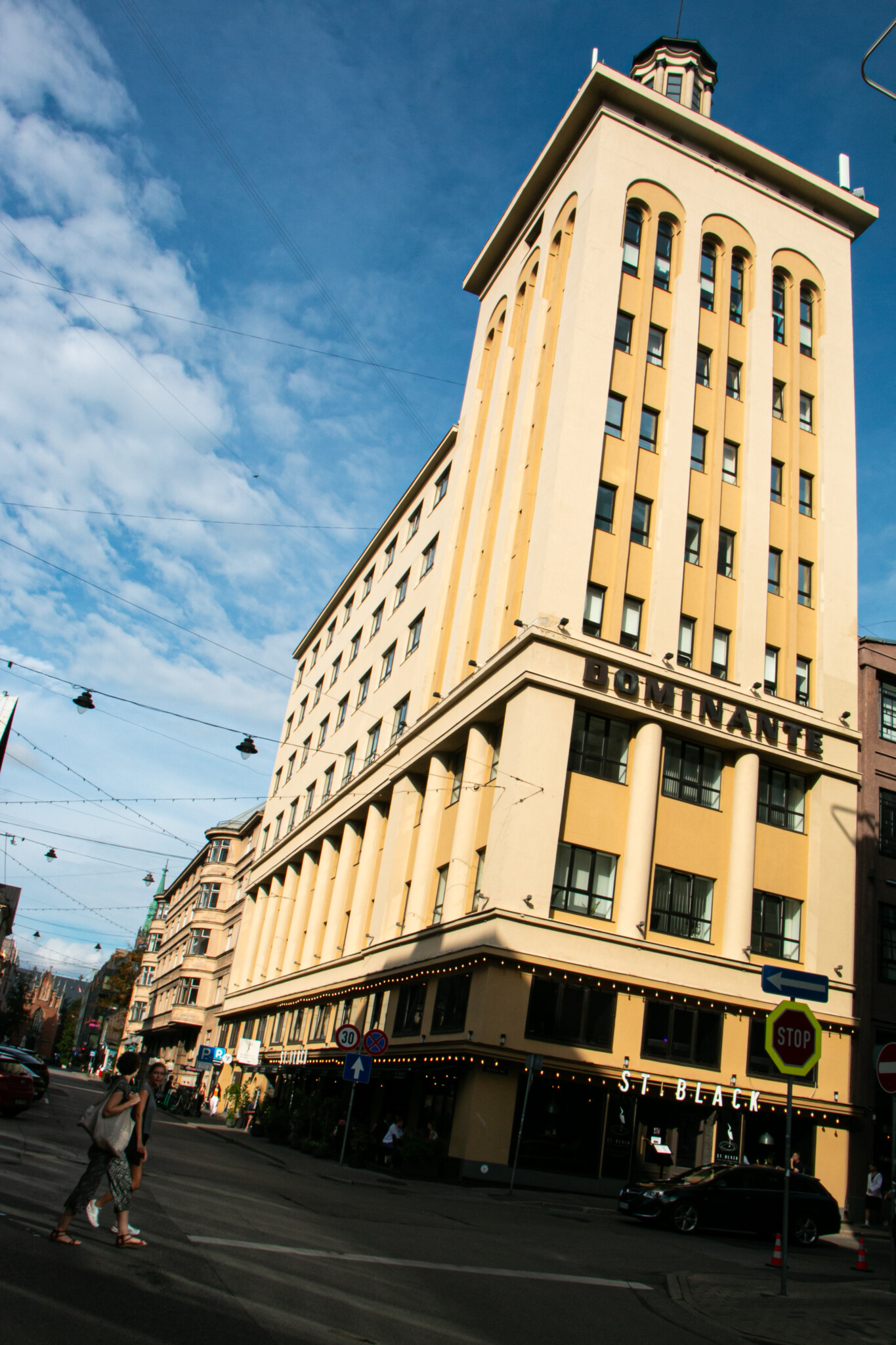
Understanding Latvia
First things first. To better appreciate a visit to a city, I think it’s good to start with a brief history lesson. This will make your visit more interesting and help you better understand the sites you see and the origins of the city and country.
Latvia’s history stretches back over 10,000 years, with ancient human settlements marking the early presence of Baltic tribes such as the Latgalians, Selonians, and Curonians. The medieval period saw significant changes with the arrival of German crusaders in the 12th century. By the early 13th century, these crusaders had established control over the region, forming the Livonian Confederation. Riga, founded in 1201 by Bishop Albert of Riga, quickly rose to prominence as a vital center for trade and religion.
The 16th century brought further transformation as the Livonian Confederation dissolved, leading to the division of Latvia’s territory between Poland and Sweden. During this time, Riga flourished under Swedish rule, becoming an important city within the Swedish Empire, fostering cultural and economic growth.
In the early 18th century, Latvia’s fate shifted again following the Great Northern War, as it became part of the Russian Empire. The 19th century was a period of industrialization and rising Latvian nationalism, sparking a cultural revival and calls for greater autonomy.
Latvia declared its independence on November 18, 1918, in the wake of World War I and the Russian Revolution. The interwar period saw Latvia make substantial political and economic progress despite various challenges.
World War II was a devastating time for Latvia, with occupations by the Soviet Union in 1940, Nazi Germany in 1941, and the Soviets again in 1944. These occupations led to significant loss of life and widespread repression.
Latvia regained its independence on August 21, 1991, following the collapse of the Soviet Union. Since then, the country has achieved considerable economic development and international integration, becoming a member of the European Union and NATO in 2004.
Best places to stay
Redstone Apartments (9.1 / 10)
Redstone Apartments, located in the heart of Riga, has a prime location just a 3-minute walk from the House of Blackheads and 200 yards from Riga Town Hall Square. This recently renovated condo hotel is also close to notable attractions such as the Latvian National Opera, Vermanes Garden, and the Nativity of Christ Cathedral. The property offers convenient amenities including an elevator and concierge service for guests
Grand Palace Hotel (8.9 / 10)
The Grand Palace Hotel – arguably the best hotel in Riga, is perfectly situated in the heart of Riga’s Old Town, just 100 meters from Riga Castle. Built in 1877, this historic gem offers elegantly furnished rooms, private sauna, 24-hour gym, and proximity to major sights like Doma Square.
Neiburgs HotelOpens (9.3 / 10)
The 4-star Art-Nouveau Neiburgs Hotel, located in Riga’s Old Town overlooking Dome Square, offers luxurious, air-conditioned apartments with kitchenettes, free Wi-Fi, flat-screen TVs, and spacious bathrooms with heated floors. Guests can enjoy a buffet breakfast and Baltic and European cuisine at the gourmet Neiburgs restaurant, and relax with a drink at the cozy bar.
Things to do in Riga
1. St. Peter’s Church
St. Peter’s Church is one of Riga’s most iconic landmarks. Although there is nothing particularly special about this church compared to the millions of other churches in Europe (in my opinion), St. Peter’s does offer one of the best views of the city. From the top of its spire, you can get 360-degree views of Riga, including the Old Town and the Daugava River. The admission fee is about €9, but it’s well worth it in my opinion!
2. House of the Blackheads
The House of the Blackheads is another one of the must-visit sights in Riga, and no surprise the building is strikingly beautiful with gorgeous architectural style, built in the 14th century which functioned as a guild for unmarried German merchants. The building was damaged during WW2 and later demolished by the Soviets despite protests from locals. Between 1996 and 2000, the building was rebuilt based on studies by Riga Polytechnic Institute and today it serves as a museum and event venue.
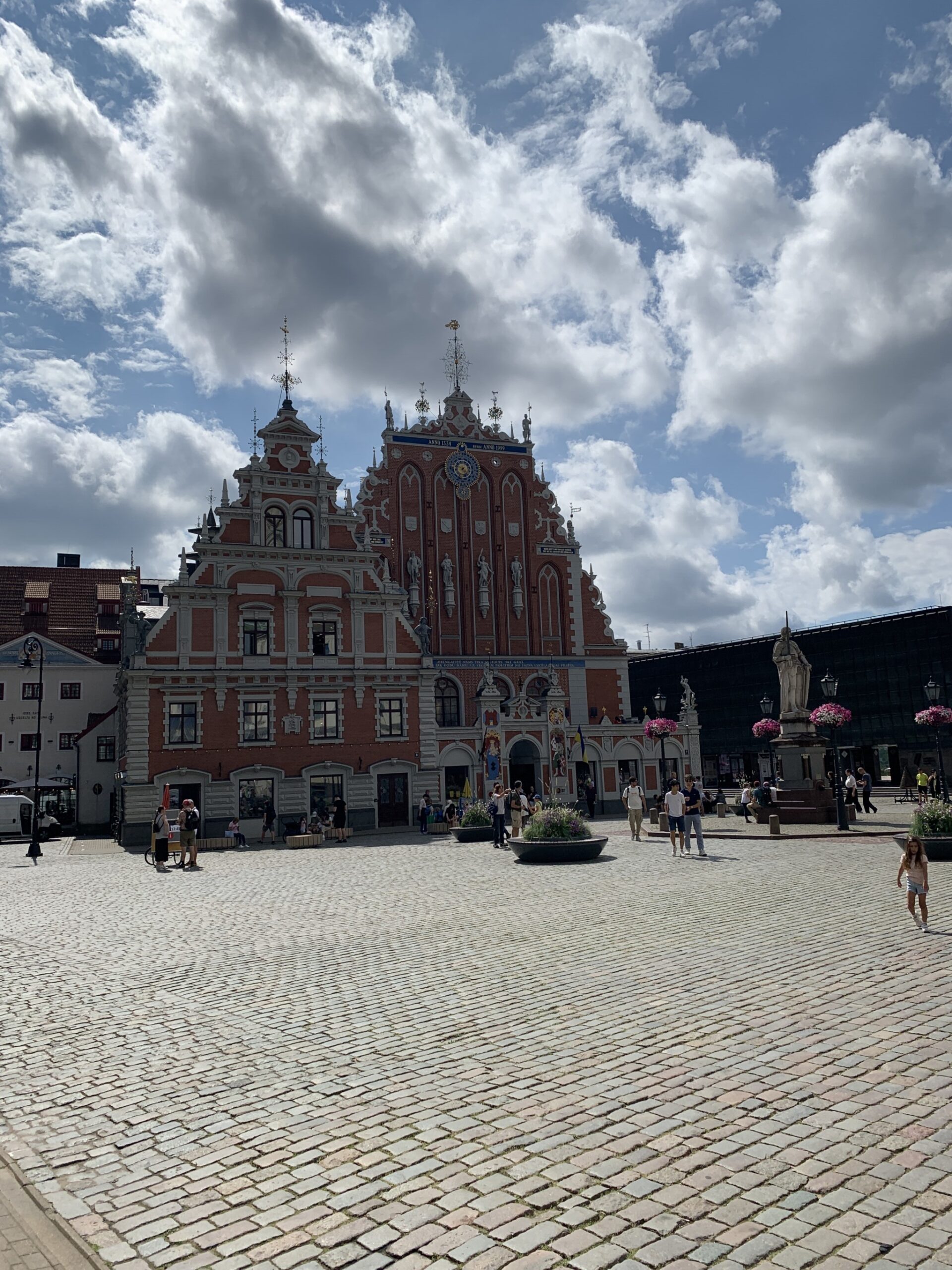
3. Three Brothers
The Three Brothers in Riga Old Town are a trio of historical houses on Maza Pils Street, each representing a specific period of architectural development from the late 15th century to the 17th century. The oldest house, located to the right when standing in front of the three, features Gothic elements typical of medieval merchant homes. The middle house displays ornate Dutch Mannerism from 1646, while the slimmest one to the far left is also the youngest and has a simpler Baroque style from the late 17th century. These well-preserved buildings now house the Latvian Museum of Architecture, which gives insight into the city’s architectural history.
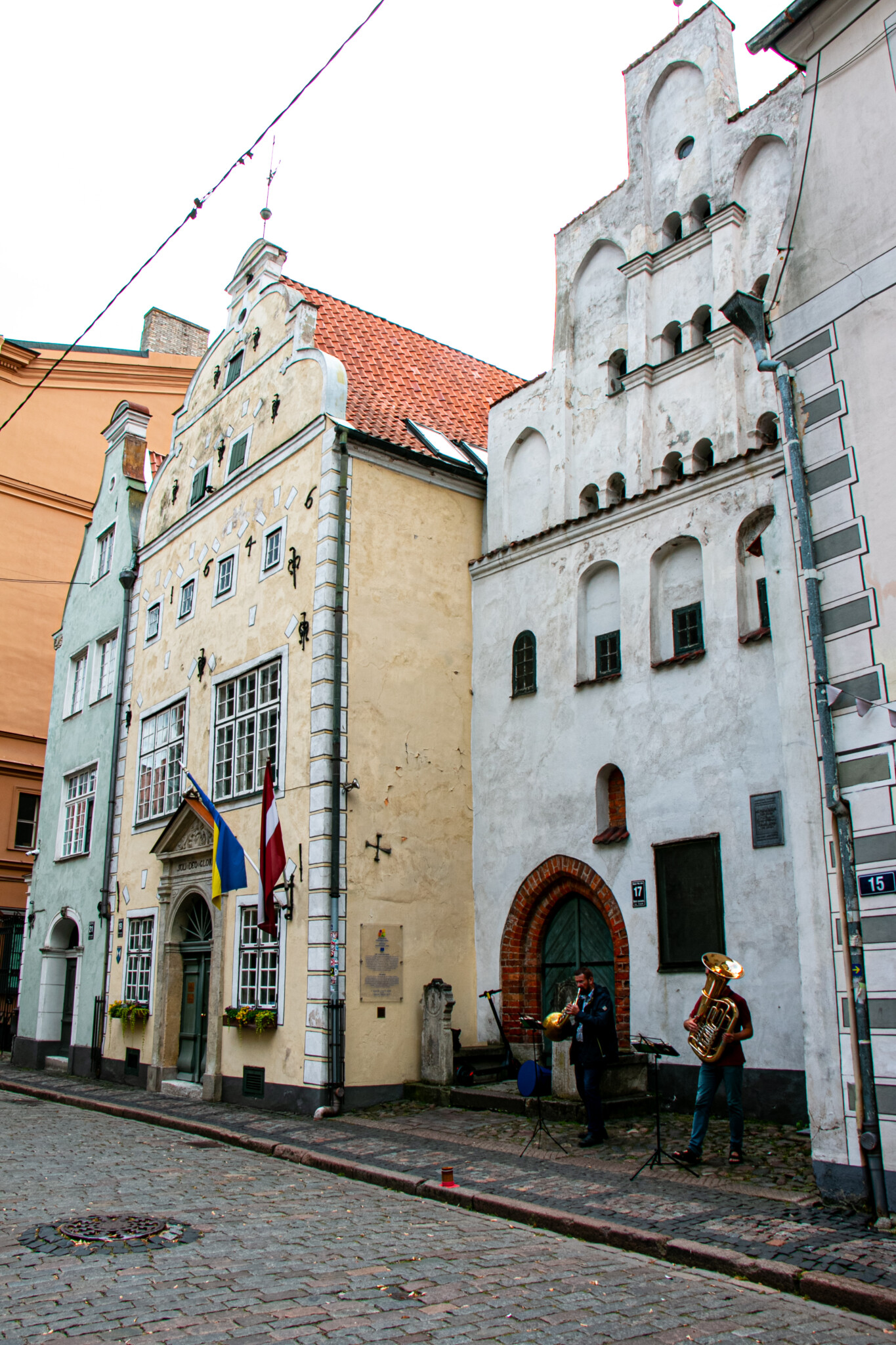
4. Admire Art Nouveau Architecture
Continuing on the theme of architecture, Art Nouveau is a style that has significantly shaped Riga’s present appearance. It is estimated that roughly 30% of all buildings in the city center are built in the Art Nouveau style, making Latvia’s capital the city with the highest concentration of Art Nouveau architecture in the world.
The Art Nouveau in Riga emerged during the late 19th and early 20th centuries and was driven by the city’s economic prosperity and cultural diversity. It was influenced by broader European artistic movements at the time and local architects like Mikhail Eisenstein and Konstantīns Pēkšēns created innovative buildings that shaped Riga into its present form.
Key highlights include:
Alberta iela
Alberta iela is a street lined with some of the most spectacular Art Nouveau buildings in Riga. The intricate facades, adorned with sculptures and decorative elements, are a proof of the creativity of architects like Mikhail Eisenstein.
Riga Art Nouveau Museum
Also located on Alberta iela, the Riga Art Nouveau Museum is dedicated to this architectural style. The museum itself is in an Art Nouveau building and offers a look into the interior design of the era. If you are interested in architecture and design, be sure not to miss this place!
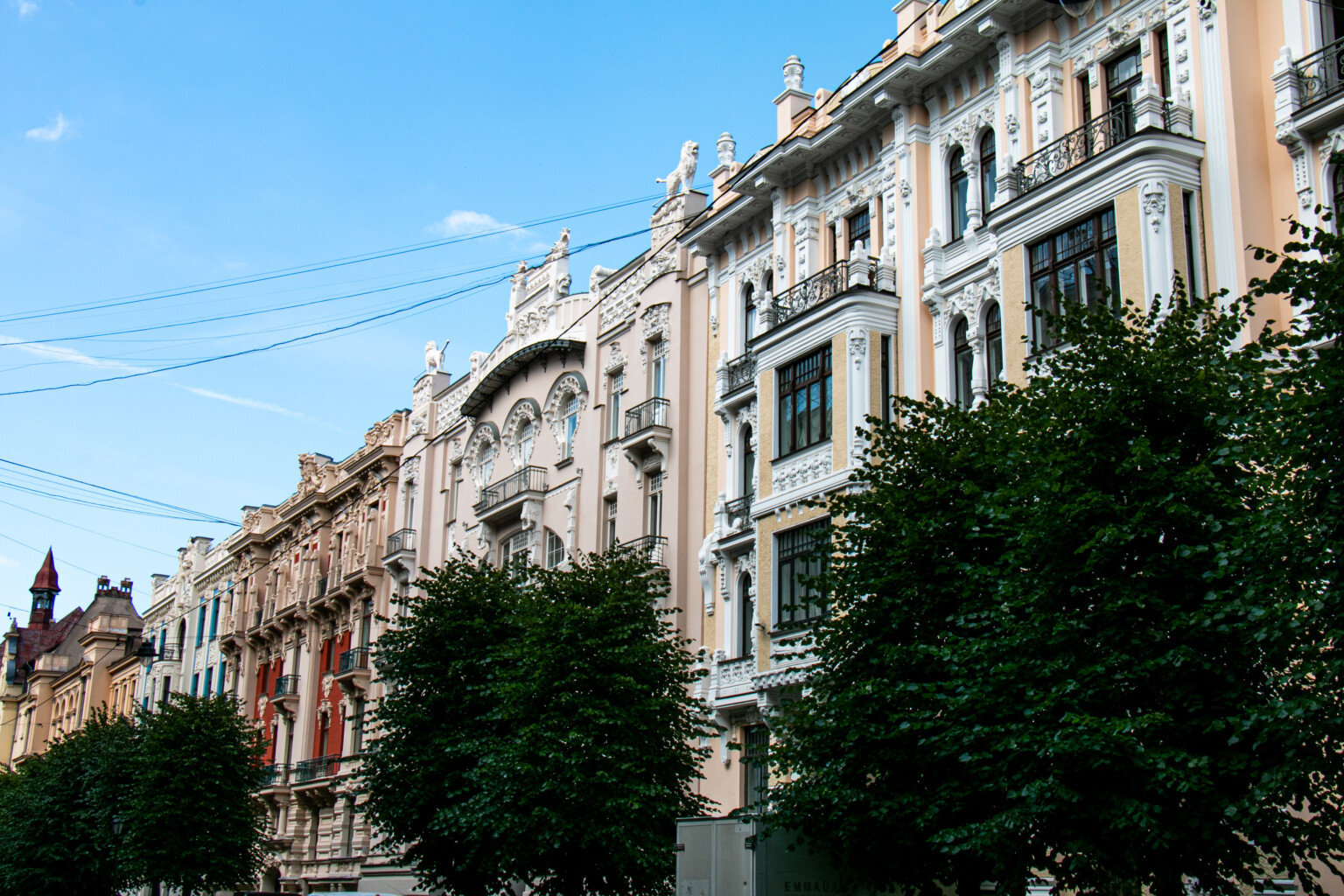
5. Latvian Ethnographic Open-Air Museum
The Latvian Ethnographic Open-Air Museum, located near Riga on Lake Jugla’s banks, is one of Europe’s oldest and largest open-air museums. Founded in 1924 and inspired by Skansen in Stockholm (a place in Stockholm I think every tourist should visit), it features over 100 authentic historical buildings from different Latvian regions, showing rural life from the 17th to the 20th century. Here you can explore furnished farmsteads, windmills, and churches and observe traditional crafts like blacksmithing and weaving. Cultural events such as folk music concerts and seasonal festivals are regularly hosted here so make sure to check the events calendar. Overall a visit to the Open-air museum is a relaxing activity that is also family-friendly.
9. KGB Building (Corner House)
The KGB Building, also known as the Corner House, is a reminder of Latvia’s Soviet past. The building served as the Soviet secret police (KGB) headquarters during the occupations from 1940-1941 and 1944-1991. This former headquarters of the KGB now serves as a museum, where visitors can learn about the dark history of Communist repression and the notorious secret police’s activities.
10. Latvian Academy of Sciences Observation Deck
The Latvian Academy of Sciences building in Riga, an iconic example of Stalinist architecture constructed between 1951 and 1961, stands at 107 meters and features Soviet-era design elements like the hammer and sickle. Originally funded by compulsory “donations” from Latvian farmers, it was built to symbolize Soviet power and influence. If the building isn’t impressive enough, there is also has an observation deck on the 17th floor, with some stunning panoramic views of Riga. Entrance fee is €8.
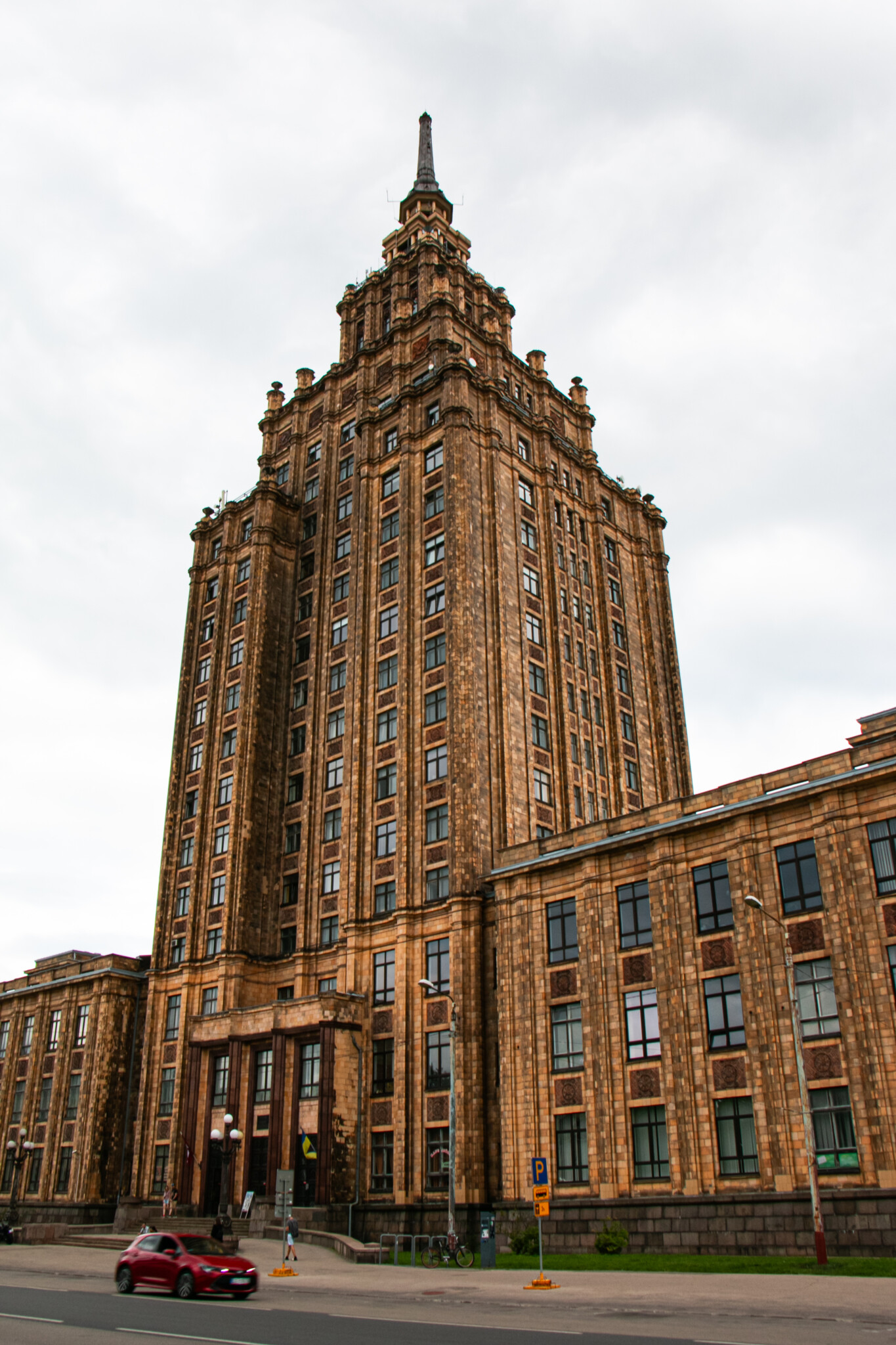
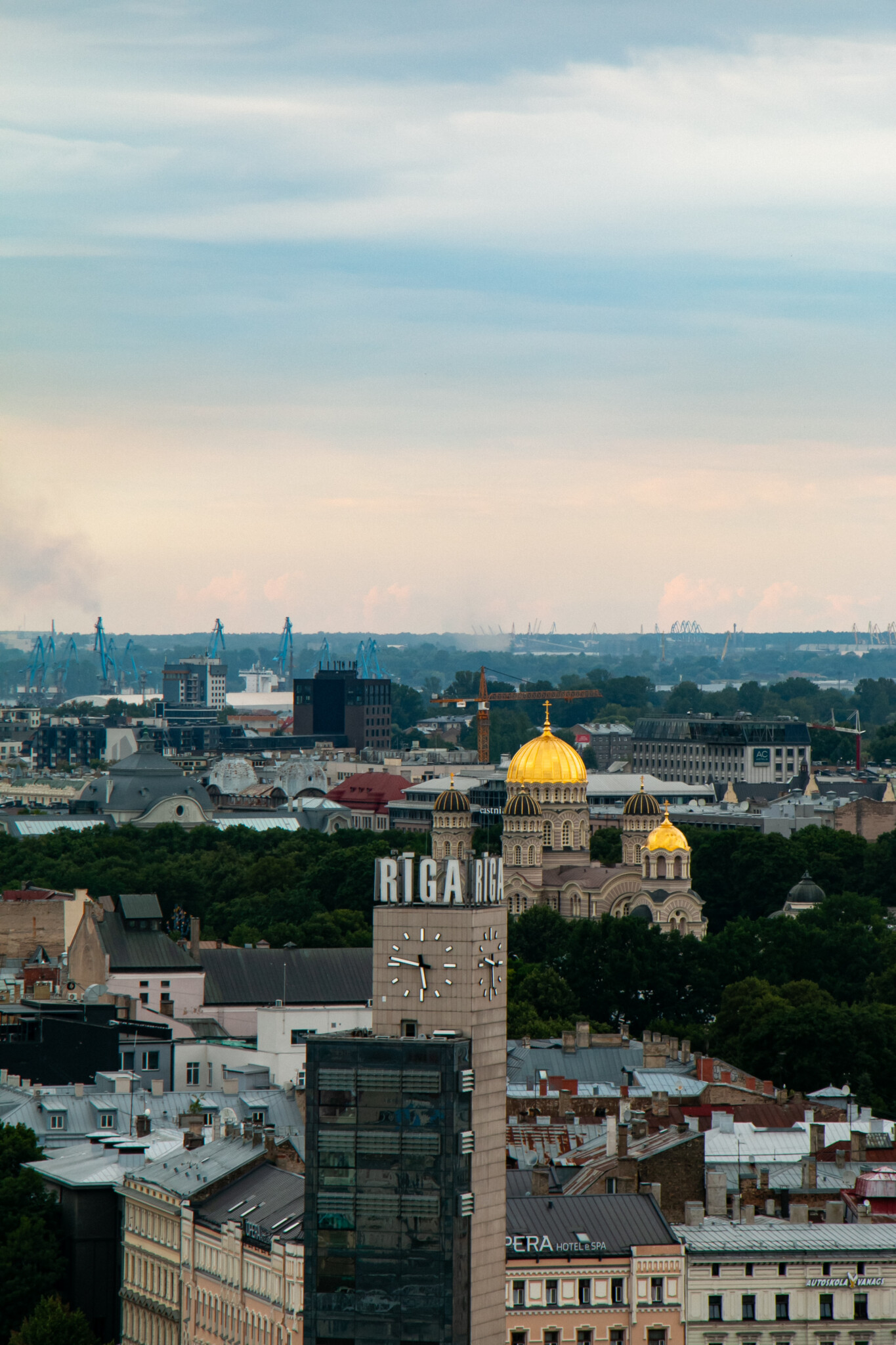
11. Ethnic Museum “The World of Hat”
Riga seems to have a museum for everything, and the “World of Hat” museum is a particularly unique one. It presents a large collection of traditional hats and headgear from around the world, exploring the diversity of cultures through headwear. The museum offers insight into the traditions and customs of different cultures, making it an interesting and educational experience for visitors of all ages.
12. The Pauls Stradiņš Medicine History Museum
The Pauls Stradiņš Medicine History Museum in Riga, Latvia, is one of the largest medical history museums in the world, founded by Professor Pauls Stradiņš in 1957. It showcases the evolution of medicine through extensive collections of historical medical instruments, pharmaceuticals, anatomical models, and reconstructed medical environments.
However, if this sounds boring to you, the main reason for visiting this museum (in my opinion) is the fascinating exhibit featuring the work of Soviet scientist Vladimir Demikhov! Dr. Demikhov was known for his pioneering but controversial experiments in organ transplantation, including the creation of a two-headed dog! It feels like something straight out of a Frankenstein novel. This exhibit includes photographs, documentation, and even a model of the two-headed dog. Furthermore, the exhibition highlights the scientific advancements and ethical questions surrounding the experiments performed by Dr. Demikhov and the Soviet Union.
13. Salaspils Memorial
If you have a special interest in WWII or Soviet monuments, you should not miss the Salaspils Memorial, located roughly a 30-minute drive from Riga. The monument commemorates the victims of the Salaspils concentration camp, operated by Nazi Germany during World War II, and was established in 1967. Like many WWII monuments, the memorial features oversized sculptures of humans meant to evoke the suffering and resilience of the prisoners who endured harsh conditions and forced labor during the war. Designed by Latvian sculptors and architects, the site serves as a powerful reminder of the atrocities committed during the Holocaust.
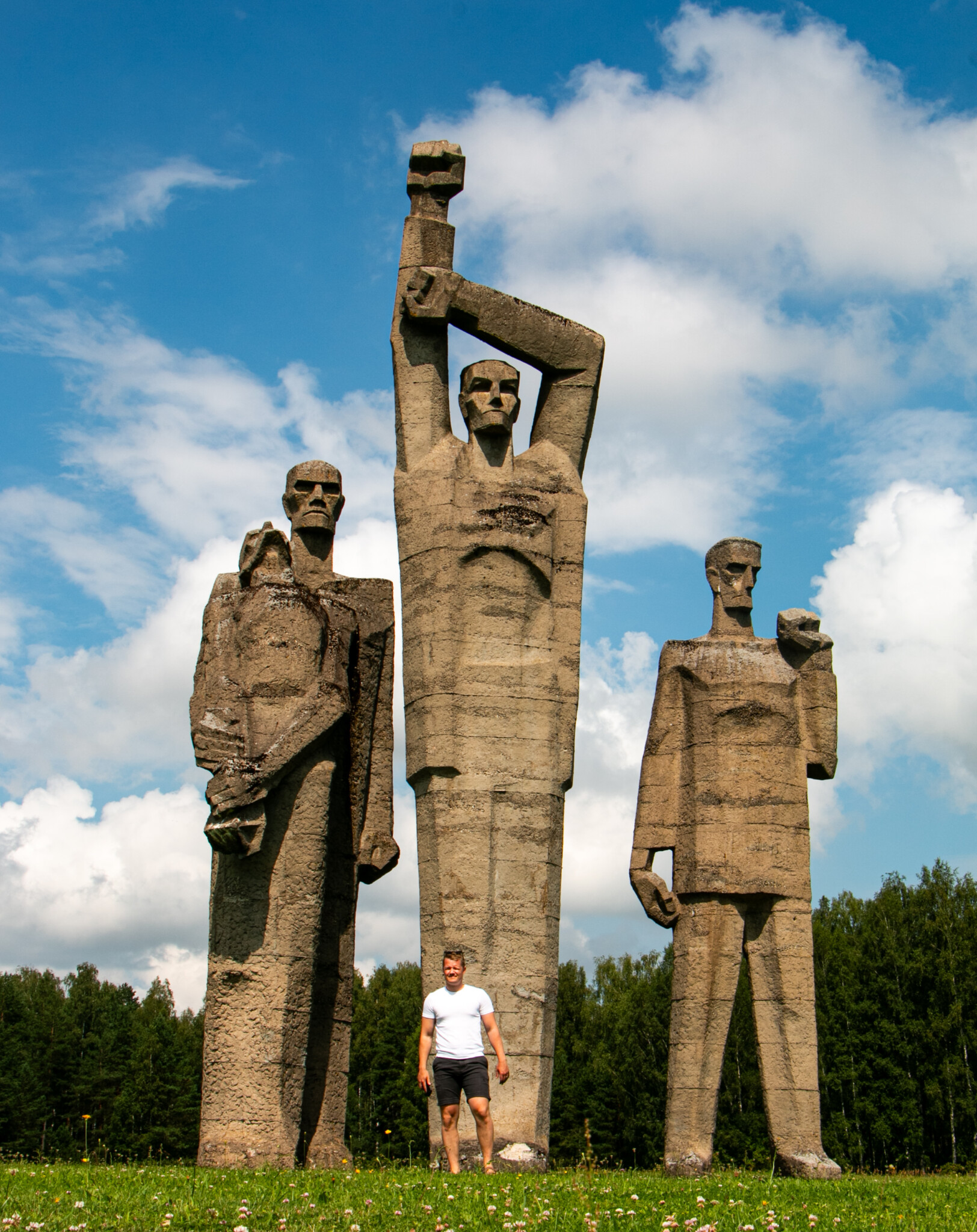
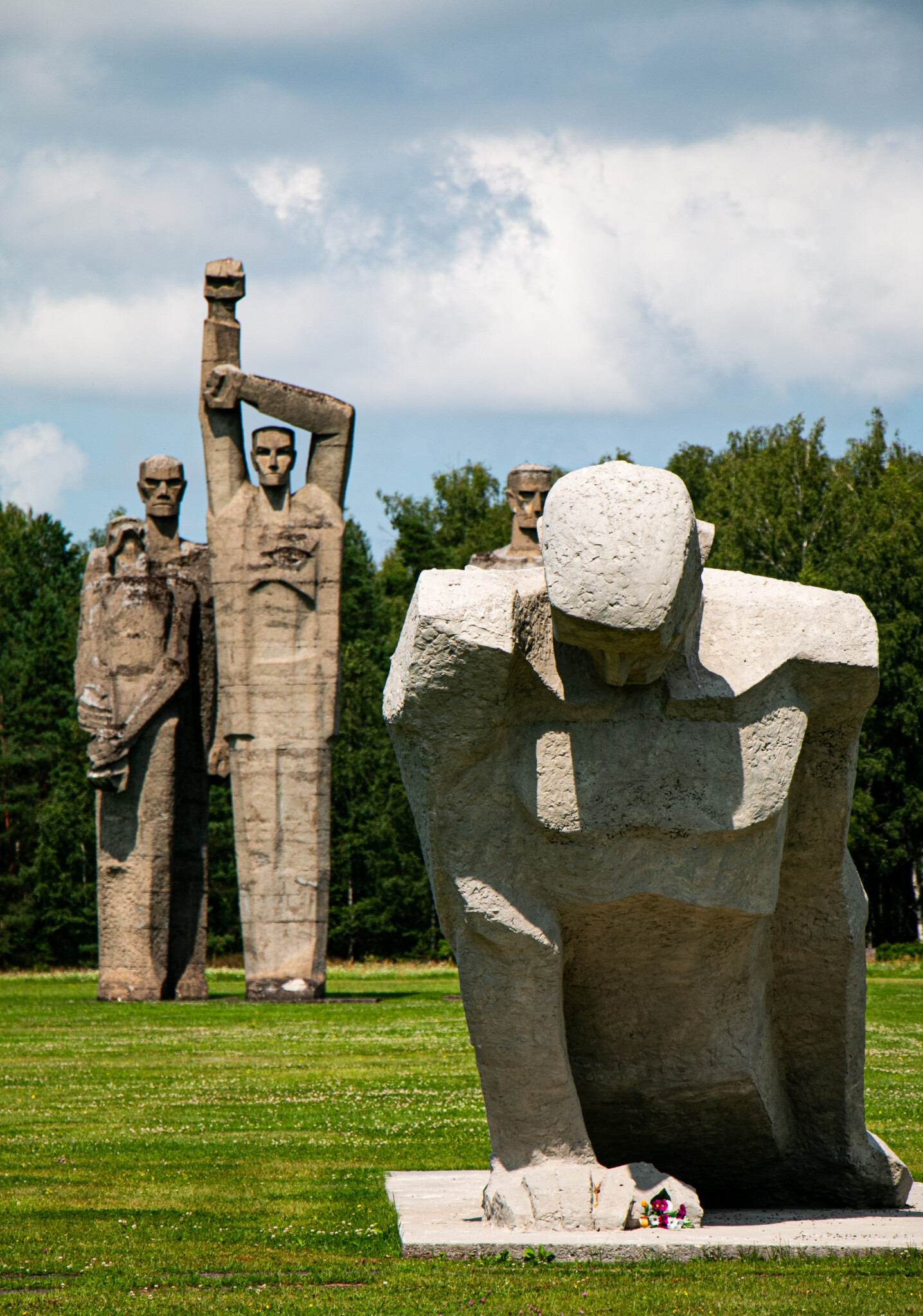
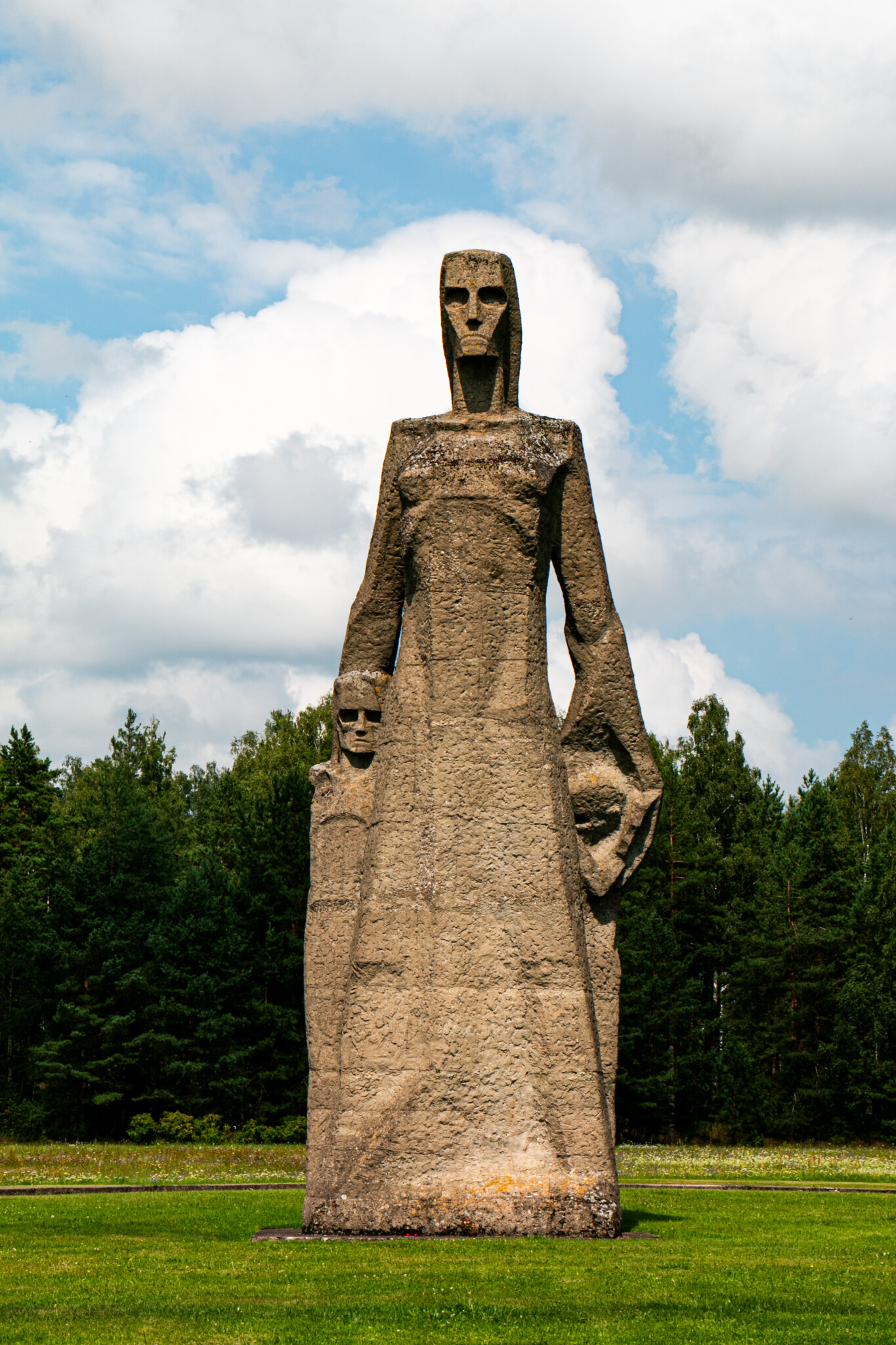
14. Explore Riga’s Parks and Gardens
Riga is a green city, with numerous parks and gardens providing tranquil escapes from the urban hustle, make sure to enjoy them by going for a walking or enjoying a picnic during the summer months Some of the best spots to relax and enjoy nature include:
Bastejkalna Park
Bastejkalna Park, located in the city center, is a picturesque park with pathways and flowerbeds running along a narrow canal. It’s a great place for a leisurely walk or a boat ride on the canal. The park is especially beautiful in spring and summer when the flowers are in full bloom.
Vermanes Garden
Vermanes Garden is the oldest public park in Riga, offering a serene environment with fountains, sculptures, and beautifully landscaped gardens. It’s a perfect spot for a picnic or a quiet afternoon with a book.
15. Central Market
Housed in five former Zeppelin hangars from the 1930s near the central train station, the Riga Central Market is one of the largest and most interesting markets I’ve come across in Europe. The market offers a wide range of fresh produce, meats, fish, and local delicacies. It’s a great place to try Latvian street food and pick up some unique souvenirs.
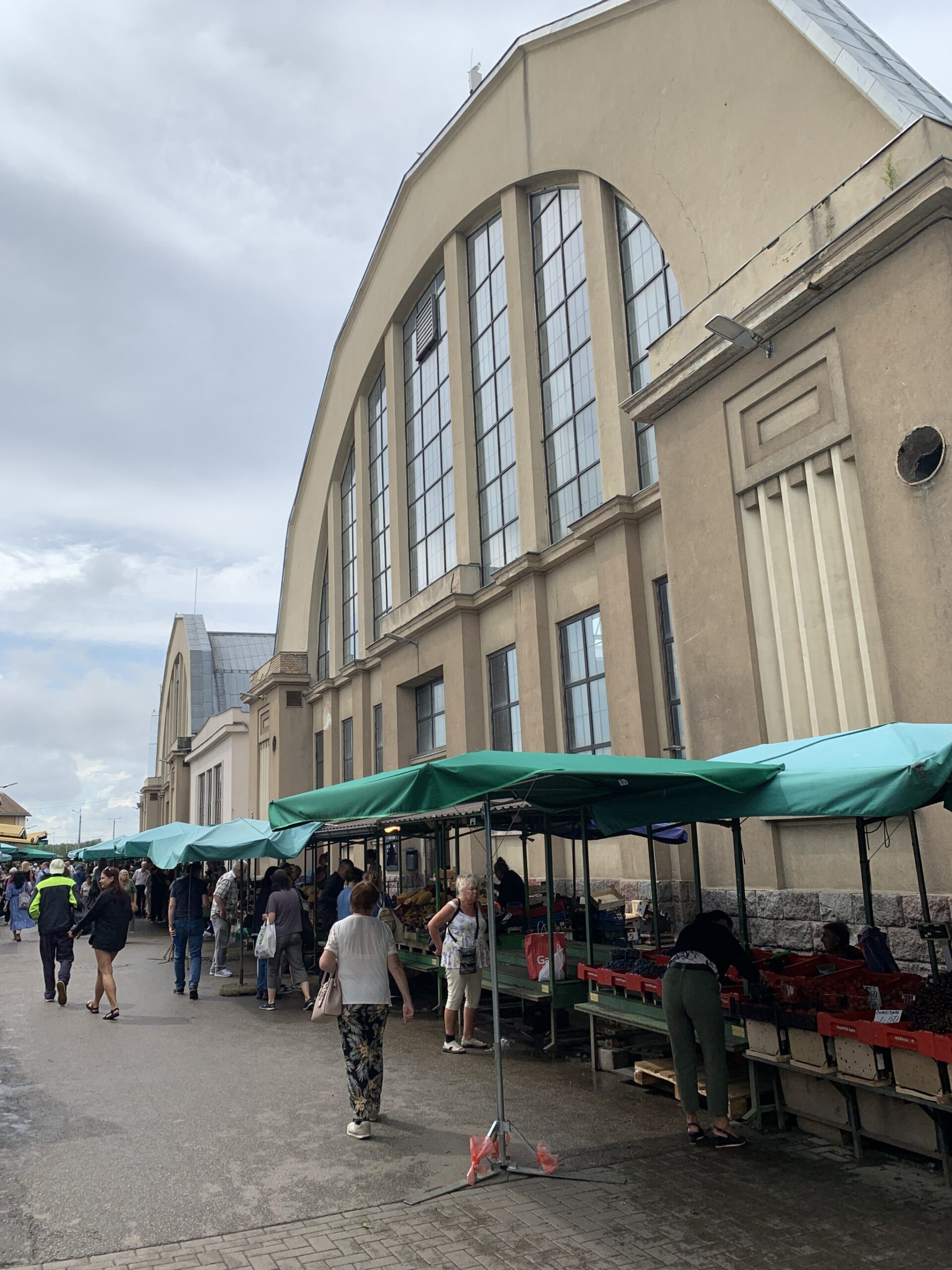
16. Take a Day Trip from Riga
Due to the small size of Latvia and Riga’s location in the country, it is an ideal base for exploring other parts of Latvia. Here are some day trips that I recommend:
Jurmala
Jurmala is a popular seaside resort located just a short train ride from Riga. Known for its sandy beaches and charming wooden houses, it’s a great destination for a relaxing day by the sea. Take a stroll along the beach, visit the Dzintari Forest Park, or unwind in one of the many spas.
Sigulda
Sigulda, sometimes referred to as the “Switzerland of Latvia,” is located in the Gauja National Park. It’s a perfect destination for those seeking to connection with nature, with many activities such as hiking, bobsledding, and exploring medieval castles. Don’t miss the Gutmanis Cave and the Turaida Castle for some stunning views and historical insights.
Cesis
Cesis is another picturesque town, located not too far from Sigulda within the Gauja National Park, known for its well-preserved medieval castle and charming old town. Here you can wander through the cobbled streets, visit the Cesis Castle Complex, and enjoy the scenic beauty of the surrounding Gauja National Park.
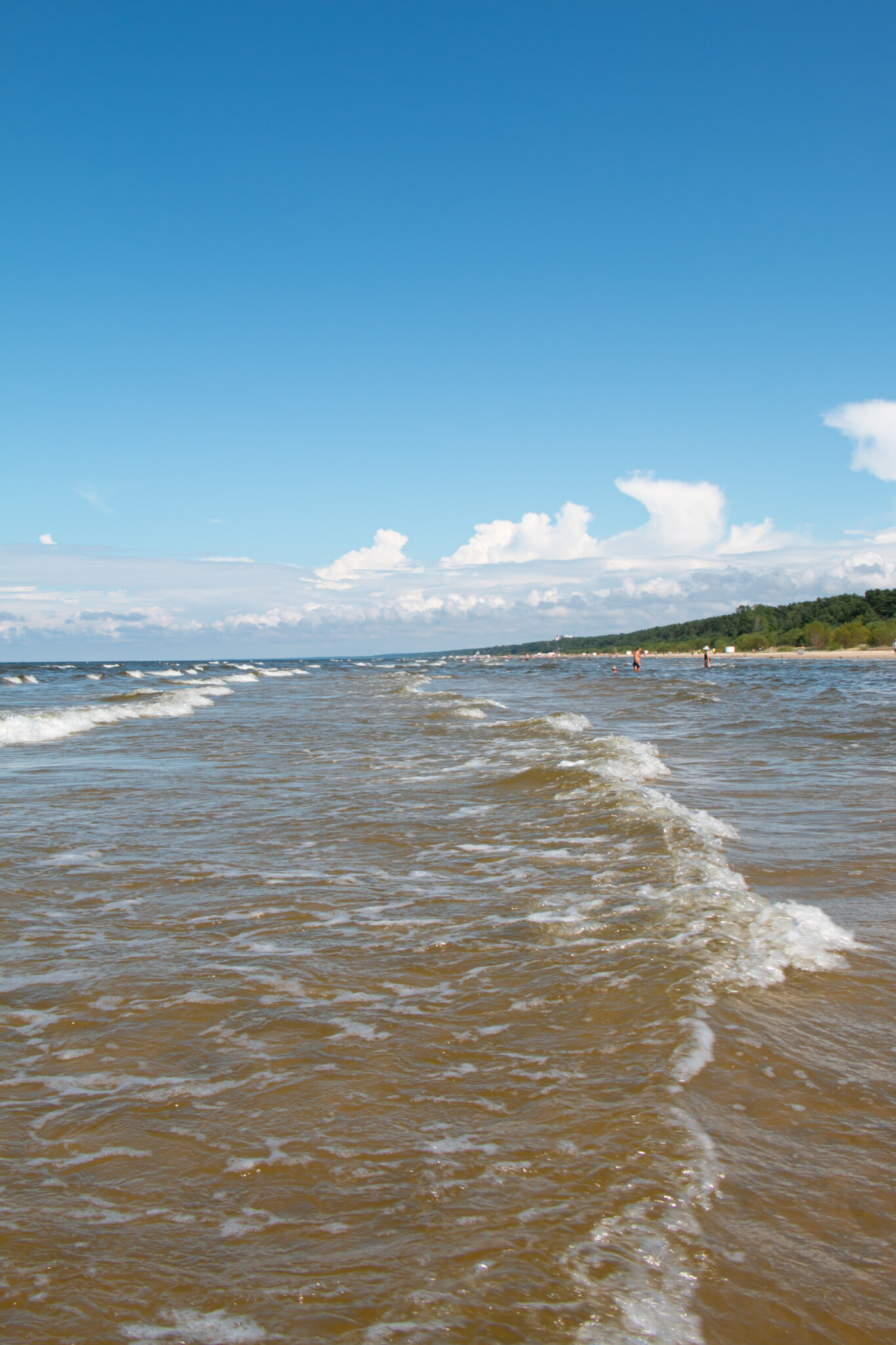
17. Attend Festivals and Events
Riga regularly host events or festivals and events throughout the year, so be sure to check before you book your trip in order not to miss anything. Below you will find the top events that I think you should be on the look out for:
Riga City Festival
The Riga City Festival, held every August, celebrates the founding of Latvia’s capital with a range of activities and events. The festival features open-air concerts, cultural exhibitions, street parades, sports competitions, and food and craft markets. The festival highlights Riga’s cultural heritage and community spirit and culminates in a spectacular fireworks display over the Daugava River.
Latvian Song and Dance Festival
The Latvian Song and Dance Festival, originating in 1873 in Riga, is a major cultural event celebrating Latvian choral music and national identity. The festival celebrates Latvia’s rich heritage of choral music and folk dancing and brings together tens of thousands of participants from choirs and dance groups across the country. The festival hosts large performances, including massive choir concerts where thousands sing traditional Latvian songs in unison, and elaborate dance performances showcasing folk traditions. In fact, each of the other two Baltic States, Estonia and Lithuania, have their own Song and Dance Festivals, held every five years.
After the Baltic States gained independence from Russia following the First World War, these festivals became widely popular as a way to assert Baltic cultural identity. Each of the three countries built special venues and festival sites for the events. Following their incorporation into the Soviet Union after the Second World War, the celebrations were adapted to fit the communist ideology. Since regaining independence in 1991, the Baltic States have taken various steps to protect this tradition, which has grown significantly over the years. Today, the Baltic States’ celebration is recognized by UNESCO as an Intangible Cultural Heritage of Humanity.
Riga Christmas Market
The Christmas market in Riga, held annually in the city’s historic Old Town from late November to early January, is a festive and cozy event featuring handcrafted gifts, seasonal foods, and warm beverages like mulled wine. Located primarily at Dome Square, the market hosts cultural performances, including choir singing and folk dancing, along with activities for children, such as meeting Santa Claus and enjoying carousel rides. Beautifully decorated with Christmas lights and a large Christmas tree, the market creates a cozy holiday atmosphere that attracts both locals and tourists. It celebrates Latvian traditions, fosters community spirit, and is a key attraction for Riga’s winter tourism.
Additional Travel Resources
Emergency Contacts
- Emergency Number: Dial 112 for police, fire, or medical emergencies while in Latvia.
Local Etiquette and Tips
Understanding local customs can make your trip smoother:
- Greetings: Latvians are generally reserved but friendly. Use “Labdien” (Good day) or “Sveiki” (Hello) for greetings.
- Tipping: Tipping is appreciated but not mandatory. Round up the bill or leave a 5-10% tip in restaurants.
- Dress Code: Dress neatly, especially when visiting churches or attending cultural events.
